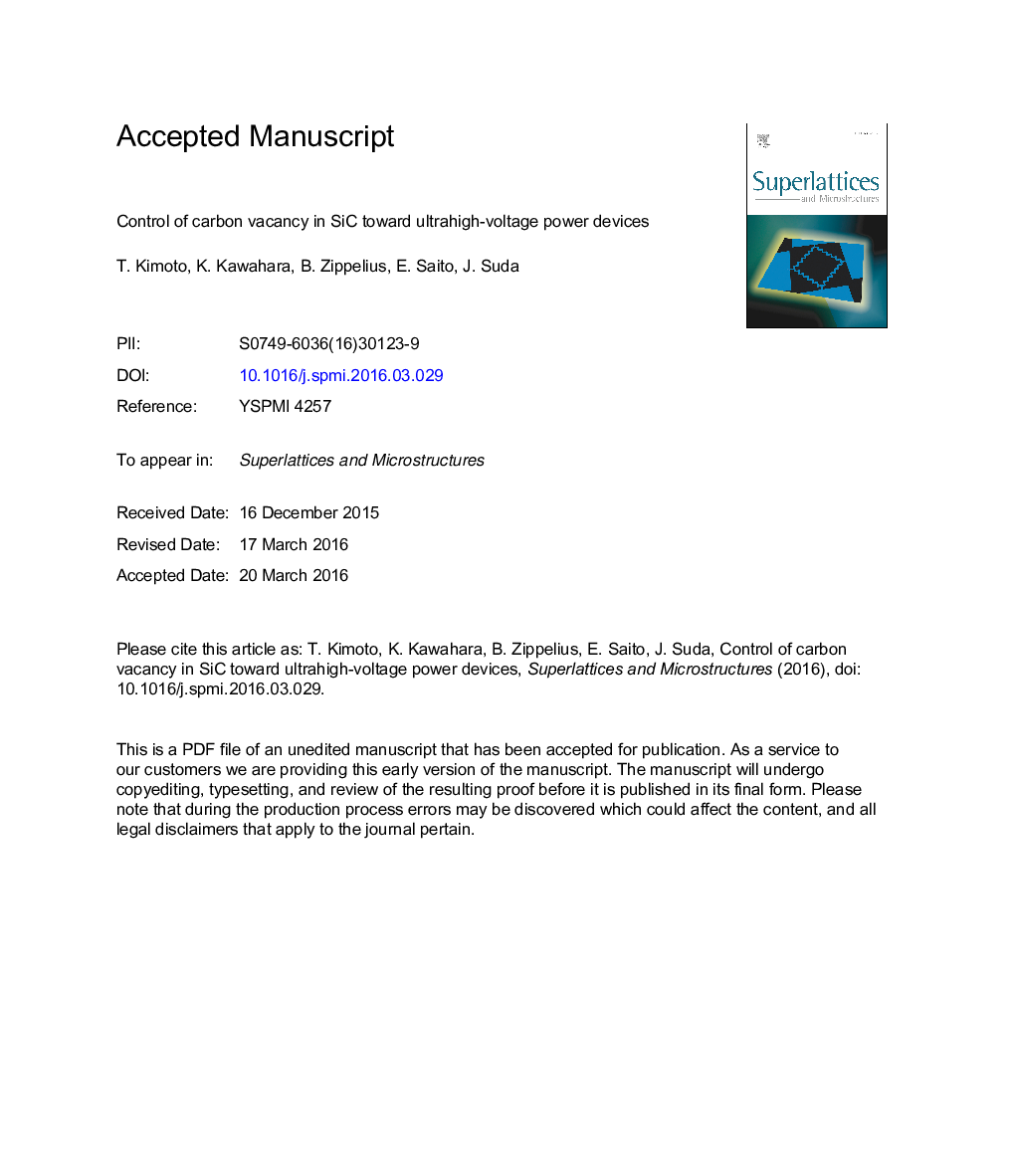| Article ID | Journal | Published Year | Pages | File Type |
|---|---|---|---|---|
| 7941908 | Superlattices and Microstructures | 2016 | 16 Pages |
Abstract
A carbon vacancy defect is one of the most abundant point defects in SiC (as-grown, irradiated, annealed) and of technological importance because the acceptor-like level of a carbon monovacancy (Z1/2 center: EC - 0.63Â eV) works as the primary carrier-lifetime killer in 4H-SiC. The carbon vacancy defects can be preferentially generated by either low-energy electron irradiation or high-temperature treatment in an inert gas ambient. On the other hand, the carbon vacancy defects can be almost eliminated by either a carbon-ion implantation process or thermal oxidation. By combination of these techniques, the density of carbon vacancy defects can be controlled in the wide range from 1011Â cmâ3 to 1015Â cmâ3 or even higher.
Related Topics
Physical Sciences and Engineering
Materials Science
Electronic, Optical and Magnetic Materials
Authors
T. Kimoto, K. Kawahara, B. Zippelius, E. Saito, J. Suda,
